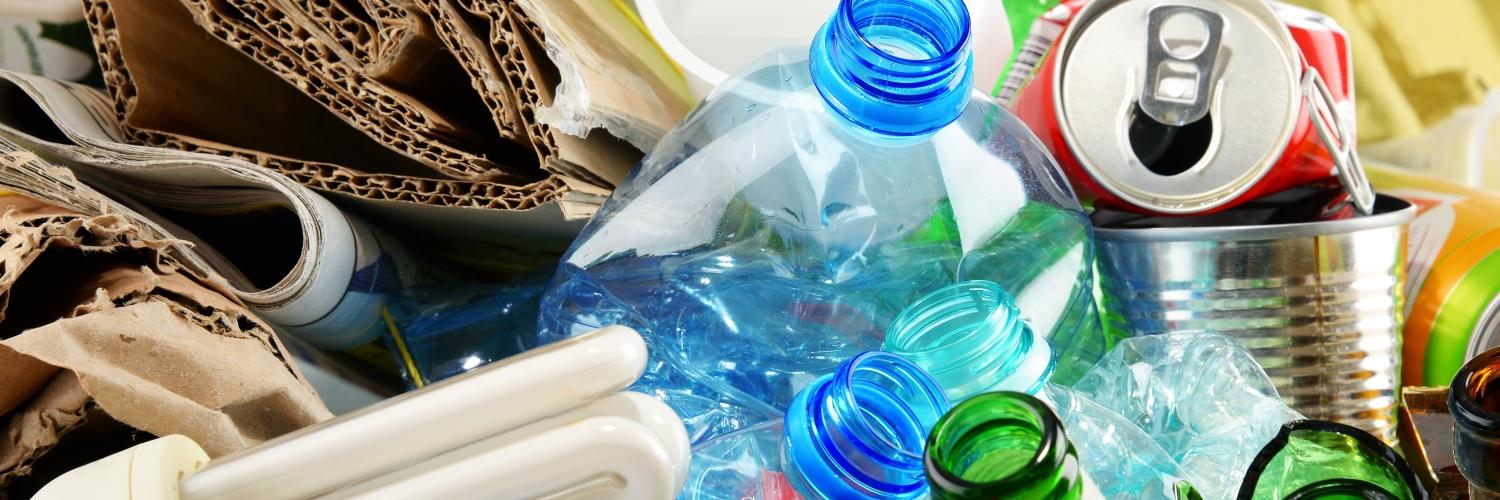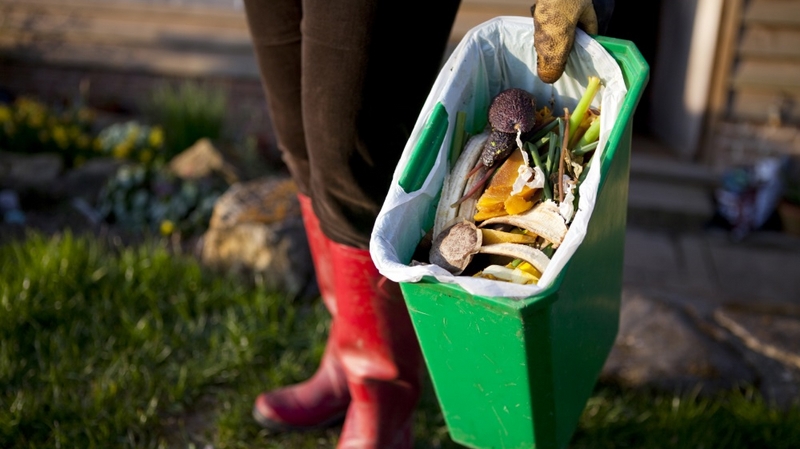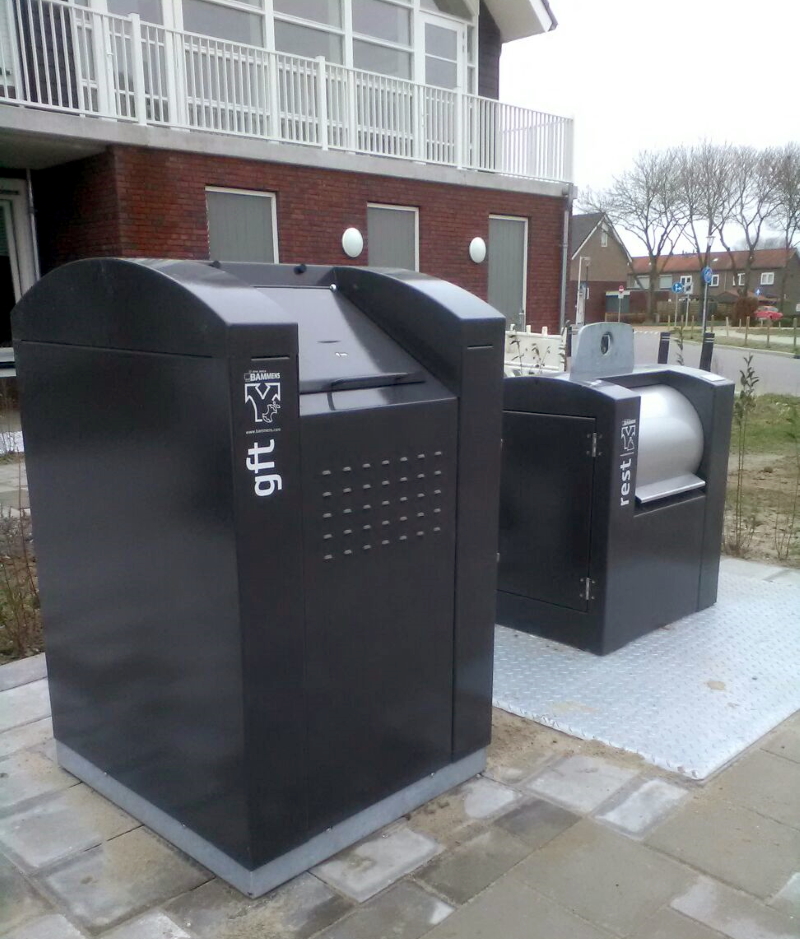
News
2 April 2020
Improving quality of food and garden waste requires value chain collaboration
Sharp decline in quality of food and garden waste
A circular economy requires a greater focus on quality. Separating wastes only makes sense when the materials are actually recycled – and preferably to the highest possible standards. The DWMA is publishing a series of articles on the quality of waste streams. Part 4: food and garden waste.
The quality of food and garden waste (FGW) is caught in a spiral of decline. ‘The situation is becoming serious,’ observes Tim Brethouwer, technical adviser of the DWMA’s Bioconversion Section. As there were no adequate quality measurements, all the members of the section had samples of collected FGW tested. The results confirmed the signals from the field: ‘Food and garden waste contains on average 3.9% contaminants. Quality is therefore declining. Around 2008 the contamination rate was 2.3% and around the turn of the century it was as low as 0.58%. This reduction in quality is being noticed. Contaminated compost is making the news, questions are being tabled in parliament and Dutch environment minister Stientje van Veldhoven has said that she shares these concerns.
Tim Brethouwer (DWMA):
"As waste processors we must test more rigorously, enforce standards and reject substandard material."

Better quality begins at the source, in households and with the municipality
Higher costs, less compost
Waste processors are in a predicament. While the quality of the input material is declining, users of compost are becoming more critical. ‘Farmers want clean compost. The biggest problems are glass and plastic. We are investing in processes such as sieving, softening and ballistic separation, doing all we can to meet the required specifications.’ The result is higher costs, but also less compost. The fine sieves not only separate off the contaminants, they also remove organic material, such as pieces of wood. No less than 13.8% of the FGW ends up in the residual stream that goes for final treatment. ‘The structure of food and garden waste is now much finer, but it should be a woody material,’ explains Brethouwer.
Focus on less residual waste
According to Brethouwer, improving quality begins at the source: in households and at the municipal authority. ‘Technically, we can do a lot to treat the waste, but there are limits. We have even had batches of food and garden waste containing 28% contaminants. That’s not food and garden waste, it’s residual waste.’ He detects a drop in enthusiasm for separating FGW among the public and observes that many municipal authorities seem to be interested in just one objective – reducing residual waste volumes. Marijn Teernstra, waste and raw materials adviser at Rijkswaterstaat (the government environment and infrastructure agency) agrees with the latter observation. ‘Over the past few years municipalities have been collecting increasing amounts of food and garden waste. This is a good thing, but in some cases it has been at the expense of quality.’
Marijn Teernstra (Rijkswaterstaat):
"Waste processors should share more information about quality with the municipal authorities."
Uniform Yes/No list for FGW
Municipal authorities are not consistent in the message they give about what belongs in the FGW bin and what does not. ‘The way the list is communicated can lead to ambiguity and confusion among the public. A new, improved Yes/No list could lead to better quality food and garden waste,’ says Marijn Teernstra of Rijkswaterstaat. Just such a standard list is being prepared under the FGW action plan for FGW. ‘We want to send a clear message. We are involving waste processors and behavioural experts in drawing up the new Yes/No list. For one thing, we have decided to exclude cat litter.’ Teernstra also says that biodegradable plastic packaging does not belong in FGW either. In modern composting plants this packaging material does not decompose sufficiently or it ends up in the residual stream. An exception is made for biodegradable plastics that can help to increase the size of the FGW stream, such as bags that make collection in the kitchen more convenient. A DWMA fact sheet gives more information about bioplastics.
Action plan
The government wants both more and cleaner FGW. Teernstra is the project manager of the FGW action plan (Aanvalsplan gft-afval), which was drawn up by Rijkswaterstaat, the Association for Refuse and Cleansing Management and the DWMA. ‘We focus on municipal authorities, because they play a key role in collection, but improving quality requires collaboration across the whole value chain. Waste processors should share more information about quality with the municipal authorities. We are working on guidelines for new contracts and procurement procedures, including agreements and conditions to improve the quality of the material and promote better dialogue.’
Bespoke advice
A more informed and differentiated approach is needed. Brethouwer’s figures show that contamination levels in FGW vary considerably between municipalities. In some it is around 1%, while others are as high as 10%. One of the initiatives in the action plan is the provision of bespoke advice to five municipalities. ‘We look for solutions. What route does the food and garden waste follow, where are the hotspots and what improvements are possible? We also want to turn all this information into a guidance document for municipal authorities, which will be published around the end of the year.’
Stricter quality standards for Keurcompost
Dutch composters produce compost to strict quality standards under the Keurcompost label. There are three quality classes: A, B and C. Tim Brethouwer, technical adviser to the DWMA’s Bioconversion Sector: ‘Under pressure from the market we are raising these standards even higher. We are switching to another measurement method, which should lead to even cleaner compost. The assessment criteria for Keurcompost were adapted last year in preparation for this.’
Incentives
Next year Teernstra wants to review the whole system. What he believes is missing are sufficient incentives to obtain clean FGW. ‘Neither the municipalities nor waste processors have opportunities to get a better financial return from cleaner food and garden waste. Compost needs a good business case as it now has to compete with animal manures.’ Brethouwer argues for a statutory quality framework with stringent quality standards. ‘At the moment, municipal authorities set a contamination limit of 5% in their contracts. This is too high. Processors must test more rigorously, enforce standards and reject substandard material. A third of all our test samples were above the 5% standard.’
Stricter quality standard
The municipality of Hoeksche Waard is taking the lead. It is the first municipality to include a quality standard of maximum 2% contamination in its tender document. In the previous procurement round the quality standard was 5%. ‘We are committed to a lower percentage, which we already meet,’ says René Huisman, director of RAD Hoeksche Waard waste collection company. In return, they are asking for a lower treatment charge, because providing good quality FGW involves more work. ‘We have to employ an additional bin worker on each vehicle. They walk ahead of the vehicle and check the quality of the material in the bins, attaching yellow and red cards where appropriate. We have also taken on more special investigating officers, who give warnings and issue tickets. In addition, we have started a communication campaign and have stopped using underground containers for the collection of food and garden waste, as the quality of the waste in these containers was not good enough. We are replacing them with above-ground containers with a capacity of 240 litres.’
René Huisman (RAD Hoeksche Waard):
"We are committed to a stricter quality standard of no more than 2% contamination."

Hoeksche Waard municipality have installed above-ground containers with a capacity of 240 litres because the underground waste bins did not work (photo: Hoeksche Waard)
Joint solutions
Hoeksche Waard recently introduced the Diftar (differential tariff) charging method and is phasing in a reverse collection system. Huisman says their aim of reducing the amount of residual waste from 125 to 100 kilos per person must not be at the expense of the quality of the collected FGW. This is a challenge he is determined to take on together with the treatment company. ‘Our tender says that we work together to find a solution to the problem of keeping the food and garden waste clean. We must ensure that on National Compost Day we don’t provide compost with plastic and glass in it.’
Measures to improve quality
Government authorities and waste collectors
- Municipal authorities should set stricter quality standards than 5% contamination in their tender documents.
- Monitor quality and know where contamination occurs in the municipality.
- Municipal authorities should look for solutions together with their waste treatment companies.
- Make quality a consideration in the choice of collection system.
- Ensure good inspection and enforcement.
- Communicate clearly and often about quality, including the new Yes/No list for FGW.
- Introduce financial and statutory incentives to improve quality.
Waste processors
- Innovate and introduce better separation techniques to make FGW streams cleaner.
- Communicate with waste collectors and municipal authorities.
- Revise the standards for Keurcompost so that the quality of compost can be improved.
Users (households, farmers and municipal parks and green space departments)
- Separate FGW at source and prevent contamination.
- Create better and bigger markets for compost.
Author
Addo van der Eijk - @copyright
Translation
Derek Middleton
